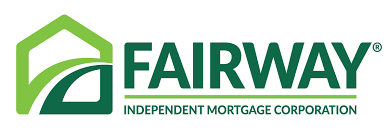A mortgage rate shows you the amount of money you’ll have to pay as a fee for borrowing funds to purchase a home, and is typically expressed as a percentage of the total amount you’ve borrowed.
Current 30 year-fixed mortgage rates are averaging: 7.90%
Current 15-year fixed mortgage rates are averaging: 7.02%
The current mortgage rates forecast indicates that rates are likely to remain high compared to recent years, but could trend downward if inflation continues to soften in 2024. Rates for both 30- and 15-year mortgages have fallen from last week, averaging the lowest we’ve seen since May 2023.
Here are the U.S. weekly average rates from Freddie Mac’s Primary Mortgage Market Survey, as of January 18, 2024:
Mortgage rates remained largely in the 6% range in 2023 until late August of 2023, when they crossed the 7% threshold for the first time since November of the previous year. They then remained high, at times coming close to (but never quite reaching) 8%. Average 30-year fixed mortgage rates finally fell below 7% in mid-December of 2023, and have remained there since.
As we continue to face inflation, rate hikes from the Federal Reserve remain a possibility in 2024. However, at their final meeting of 2023, Fed regulators held rates steady, declining to intervene with either a rate hike or cut. Since at least November, the Fed has been showing signs that it’s unlikely it’ll raise rates again in the near future, which has triggered an enthusiastic response from investors and market watchers.
It’s also important to note that, even if the Fed does increase the federal funds rate, it’s not a given that mortgage rates will follow.
→ The Fed’s monetary policy directly affects adjustable-rate mortgages, since their interest rates are calculated using a number — known as an index — that fluctuates with the broader economy.→ The Fed’s policy only indirectly impacts fixed-rate mortgages, which can move more independently and, in some cases, move in the opposite direction of the federal funds rate.
There are nine primary factors that determine your mortgage rate:

There are seven steps you can take to get your lowest home loan interest rates:
In recent years, you needed at least a 740 credit score to qualify for the lowest conventional loan interest rates, but these days you’ll need to aim even higher — to at least 780. Here’s how to improve your credit score.
You’ll snag the best possible interest rate on a conventional loan if you have a 780 credit score and make at least a 25% down payment. Your loan-to-value (LTV) ratio (which measures how much of your home’s value you need to borrow) is an important factor in your quoted interest rates. If you can push down that ratio, you’ll see more competitive rate offers.
![]() Still confused? Read more about how interest rates are determined.
Still confused? Read more about how interest rates are determined.
Lenders measure your debt-to-income (DTI) ratio by dividing your total monthly debt, including your mortgage payment, by your before-tax income. Individual lenders may set different guidelines, but 43% is a common maximum DTI ratio. A debt consolidation calculator can help you estimate how much you might be able to lower your monthly payments using a debt consolidation loan.
If you plan to move in a few years, keep in mind that an ARM loan features a lower initial rate for a set time period. If you can sell the home before that initial rate expires, you could save a lot of money in interest compared with what you would’ve spent on a fixed-rate loan.
![]() Interested in an ARM loan? See current ARM rates.
Interested in an ARM loan? See current ARM rates.
Lenders typically charge lower rates for shorter terms like 15-year loans, a common alternative to a 30-year mortgage. If you can afford the higher monthly payment, you’ll save thousands of dollars over the life of the loan, according to a LendingTree study. Running different scenarios through a mortgage calculator can help you understand exactly how much you might save if you shorten or lengthen your loan term.
A mortgage point is an upfront fee equal to 1% of your total loan amount. Paying for points is one way you can buy yourself a lower interest rate. So if you’re borrowing $300,000, for example, one point would cost you $3,000.
Each mortgage point can usually lower your rate by 0.125% to 0.25%. However, to get the exact cost of your mortgage point, you’ll need to check Page 2, Section A of the loan estimate you received from your lender.
The main reason to compare offers from several lenders is to save money — and we’re not just talking about a few dollars here and there. A LendingTree study found that homebuyers in the nation’s largest metro areas saved an average of $84,301 over the life of their loans by comparing offers from different lenders.
If you skip the crucial step of shopping around, you miss out on the opportunity to:
If you’re not sure where to start the process, check out our list of the best mortgage lenders. You can see our summary of our top lenders below.
Lender | LendingTree rating and “best of” category | Lender review |
|---|---|---|
 |  Best for refinance loans | |
 Best for VA loans | ||
 |  Best for jumbo loans | |
 Best online mortgage experience | ||
 |  Best for FHA loans | |
 |  Best for home equity loans | |
 |  Best overall mortgage loan variety |
The key to choosing a mortgage lender is to comparison shop. That means getting quotes from at least three to five lenders. It may sound like a hassle but it could save you tens of thousands of dollars.
Just be sure to shop for those quotes on the same day, since mortgage rates change on a daily basis. And don’t forget to look at the annual percentage rate (APR) for each offer — this will show you the true cost of a given loan, including interest and fees.
![]() Ready to get started? Learn how to apply for a mortgage today.
Ready to get started? Learn how to apply for a mortgage today.

As you comparison shop, you have two options for how to compare mortgage rates:
Exactly how to get that low monthly payment you’re looking for depends in part on where you are in your homeownership journey. There are two ways you could lower your monthly home loan payment:

A mortgage rate shows you the amount of money you’ll have to pay as a fee for borrowing funds to purchase a home, and is typically expressed as a percentage of the total amount you’ve borrowed.
Be careful not to confuse interest rates and APR — both are expressed as a percentage, but they’re very different. A typical interest rate accounts only for the fees you’re paying a lender for borrowing money. An APR, on the other hand, captures a broader view of the costs you’ll pay to take out a loan, including the interest rate plus closing costs and fees.
Still confused? Read our guide to better understand an APR versus interest rate.
Once you’ve selected your lender, you should ask your loan officer about the options you have to lock in a rate. Mortgage rate locks usually last between 30 and 60 days, and they exist to give you a guarantee that the rate your lender offered you will still be available when you actually close on the loan. If your loan doesn’t close before your rate lock expires, you should expect to pay a rate lock extension fee.
You’ll need to apply for mortgage preapproval to find out how much you could qualify for. Lenders use the preapproval process to review your overall financial picture — including your assets, credit history, debt and income — and calculate how much they’d be willing to lend you for a mortgage.
Use the loan amount printed on your preapproval letter as a guide for your house-hunting journey, but avoid borrowing the maximum. Our mortgage calculator can help you determine whether your mortgage payment leaves enough room in your budget to comfortably cover your other monthly bills.
The best type of mortgage loan will depend on your financial goals — while some loan types consistently offer lower rates, they may do so at the expense of higher monthly payments or complicated repayment terms. Weigh the pros and cons of a 15- versus 30-year loan and take time to understand ARM rates and how they differ from traditional fixed mortgage rates before signing on the dotted line.
If you’re considering an FHA loan because its interest rate is lower than a conventional loan rate, make sure you understand why you need to look at annual percentage rates (APRs), not just interest rates, when comparing FHA and conventional loans.
The best type of mortgage loan will depend on your financial goals — while some loan types consistently offer lower rates, they may do so at the expense of higher monthly payments or complicated repayment terms. Weigh the pros and cons of a 15- versus 30-year loan and take time to understand ARM rates and how they differ from traditional fixed mortgage rates before signing on the dotted line.
If you’re considering an FHA loan because its interest rate is lower than a conventional loan rate, make sure you understand why you’ll need to look at APRs, not just interest rates, when comparing FHA and conventional loans.